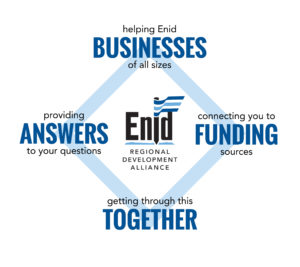Paycheck Protection Program (PPP): Wednesday March 3, the SBA released new guidance and forms to reflect changes under the Consolidated Appropriations Act, 2021 (CAA), which was enacted on December 27, 2020 and a February 22 announcement from the Biden administration on changes to the PPP. There are a number of important developments here for borrowers to consider:
-
- For all PPP borrowers: The SBA updated their Frequently Asked Questions last week for the CAA and added nine new questions as well (numbers 57 – 65). Here are some key updates for both First Draw PPP Loan (PPP1) and Second Draw PPP Loan (PPP2) borrowers:
o Interaction with the employee retention credit (ERC): New question #65 confirms payroll costs that are qualified wages for the ERC can’t be used for loan forgiveness if the employer uses those wages to claim the ERC. More on this below.
-
- For sole proprietors, self-employed individuals, and independent contractors, i.e., “Schedule C borrowers”: Under the guidance and new forms released last week, Schedule C borrowers with PPP loans approved after Wednesday, March 3 can elect to use gross instead of net income to determine the amount of their PPP loan. While this is a borrower favorable development that provides greater access to PPP loan funds for these borrowers, the guidance is drawing criticism for neglecting the estimated 2.6 million Schedule C businesses who have already been approved for PPP loans. The SBA does not believe they have the retroactive rulemaking authority to increase the PPP loans already received and it remains to be seen if there will or needs to be further legislative action in this area. There were a number of important details included in the updates last week; please read more about them in this BKD alert.
- The House passed a bill yesterday to extend the deadline for PPP applications to May 31 as the current March 31 deadline looms.
- Employee Retention Credit: Monday, March 1, Treasury and the IRS released long awaited and highly anticipated guidance on the ERC. While the guidance mostly codifies previously released FAQs on the IRS website and did not address the 2021 version of the credit (learn more about the 2020 and 2021 versions of the credit with this flowchart), there were a number of key developments that fall primarily into two areas:
- Interaction with PPP: While the CAA removed the requirement that taxpayers must choose between a forgiven PPP loan and the ERC, it provided the same wages cannot be used for both, which left many unanswered questions about how this would be handled in situations where a PPP borrower applied for forgiveness without contemplating this requirement. The guidance released last week offers both good and bad news for PPP borrowers in this situation:
o The good news: While the guidance provides wages that qualify for the ERC that are reported on a PPP loan forgiveness application cannot be used for the ERC, it limits this requirement to the extent of the minimum amount of payroll costs, together with any other eligible expenses reported on the PPP Loan Forgiveness Application, sufficient to support the amount of the PPP loan that is forgiven. In other words, an eligible employer for the ERC who had a $200,000 PPP loan and reported $250,000 of eligible payroll costs and $0 eligible non-payroll costs on their PPP Loan Forgiveness Application would be able to apply the $50,000 excess to the ERC to the extent they are qualified wages for the ERC. For this purpose, non-payroll eligible costs are applied to PPP loan forgiveness first for borrowers who included both payroll and non-payroll eligible costs on their PPP loan forgiveness application.
o The bad news: If an eligible employer for the ERC had additional non-payroll costs that it could have included on its PPP Loan Forgiveness Application but chose not to do so, wages reported up to the forgiveness amount cannot be used for the ERC.
-
- What’s a “nominal” portion of business operations? Under the previously-released FAQs, taxpayers could qualify for the ERC if the impact on the business of a governmental order was more than “nominal” based on the facts and circumstances. The guidance on March 1 provides some clarity and bright lines for making this determination by providing a new objective test. Under the test, business operations are considered to constitute more than a nominal portion if:
o Gross receipts for that portion of the business operations is not less than 10 percent of the total gross receipts based on gross receipts of the same calendar quarter in 2019; or
o The hours of service performed by employees in that portion of the business is not less than 10 percent of the total hours of service performed by all employees in the employer’s business based on the number of hours of service performed in the same calendar quarter in 2019
If you suspect that you have contracted COVID-19, please call the Oklahoma State Department of Health call center at 1-877-215-8336.
If COVID-19 has impacted your ability to meet any of your basic needs, please use the resources of Heartline/2-1-1, a 24/7 helpline that provides assistance for Oklahomans in need.

